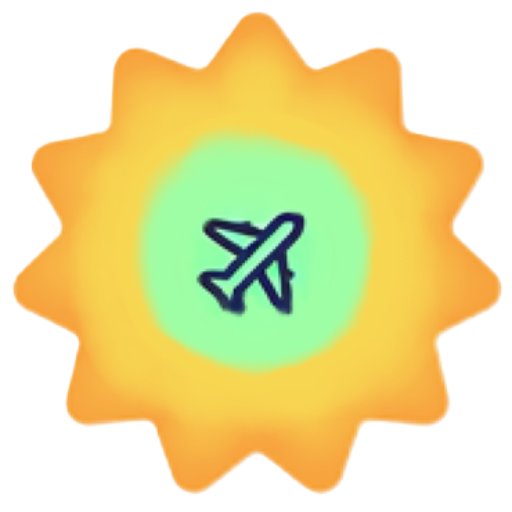When is the best time to visit Ibai, Philippines?
Ibai, located in the beautiful archipelago of the Philippines, is a hidden gem that captivates travelers with its stunning landscapes, rich culture, and warm hospitality. This destination is known for its remarkable natural attractions, including pristine beaches, lush forests, and vibrant marine life. Whether you are seeking adventure or relaxation, Ibai is sure to offer an unforgettable experience for every type of traveler.
As you explore Ibai, you’ll encounter historical landmarks that tell the story of the region’s past. Ancient churches, traditional houses, and local markets reflect the unique blend of cultures that have influenced the Philippines over the centuries. The vibrant festivals and local traditions further enrich the travel experience, allowing visitors to immerse themselves in the local way of life.
For those interested in outdoor activities, Ibai serves as a gateway to various adventures, such as hiking, snorkeling, and diving. The crystal-clear waters and diverse marine ecosystems make it a paradise for nature lovers and adventure seekers alike. With its warm weather and friendly locals, Ibai is an inviting destination for tourists throughout the year.
Tourist Seasons
- Peak Seasons: December to May is the busiest tourist period, coinciding with the dry season and numerous local festivals.
- Mid Seasons: June to August sees a moderate influx of tourists, as the weather starts to change but still offers great opportunities for exploration.
- Valley Seasons: September to November is generally quieter due to the rainy season, but visitors can enjoy lower prices and fewer crowds.
Weather Conditions & Seasonal Changes
The weather in Ibai is tropical, characterized by distinct wet and dry seasons. Average temperatures range from 24°C to 32°C throughout the year. Rainfall is highest from June to November, with the wettest months typically being September and October. The dry season, from December to May, boasts lower humidity and less precipitation, making it the ideal time for outdoor activities and sightseeing.
Special Festivities & Events
- Sinulog Festival: Celebrated in January, this vibrant festival showcases colorful parades, street dancing, and cultural performances.
- Pahiyas Festival: Held in May, this unique event honors the patron saint of farmers with stunning displays of rice and colorful decorations.
- Undas: A significant observance in November, where families honor their departed loved ones with visits to cemeteries.
- Christmas Season: The festive season begins in September and lasts until January, filled with lights, music, and local traditions.
- Independence Day: Celebrated on June 12, this day features parades, ceremonies, and various cultural events.
Worst time to visit Ibai
While Ibai is a beautiful destination year-round, the worst time to visit is during the peak of the rainy season, particularly from September to November. Heavy rainfall can lead to flooding, disrupting travel plans and outdoor activities. Additionally, this period is prone to tropical storms, making it less favorable for tourists. The high demand for accommodations during peak seasons can also result in inflated prices and crowded attractions, detracting from the overall experience.
Best Month to Visit Ibai
What is the best month to visit Ibai?
Visit Ibai in January
Ideal for those wanting to experience the lively Sinulog Festival, January offers great weather but can be crowded.
Visit Ibai in February
February brings pleasant temperatures and fewer tourists, making it perfect for exploring local culture and attractions.
Visit Ibai in March
The weather remains warm, and the beaches are less crowded as tourists start to thin out toward the end of the dry season.
Visit Ibai in April
April is hot, making it great for beach activities, but it can be busier due to Holy Week celebrations.
Visit Ibai in May
As the dry season winds down, May is still warm, but expect some humidity as the month progresses.
Visit Ibai in June
The onset of the rainy season begins, but early June can still provide good weather for travelers.
Visit Ibai in July
July can be quite rainy, but adventurous travelers may enjoy fewer crowds and lower prices.
Visit Ibai in August
August is often wet, with potential flooding, so it’s best for those who don’t mind occasional weather interruptions.
Visit Ibai in September
Expect high rainfall and tropical storms, making it one of the least favorable months to visit.
Visit Ibai in October
October remains rainy, with fewer tourists, offering a quieter experience, though activities may be limited.
Visit Ibai in November
The weather starts to improve, but it can still be quite wet, so prepare accordingly for your visit.
Visit Ibai in December
As the dry season begins, December sees an influx of tourists, making it a festive month with many local events.
Local Languages
The primary language spoken in Ibai is Filipino, with English widely understood, especially in tourist areas. Other local dialects, such as Cebuano and Ilocano, may also be heard.
Religions
Approximately 81% of the population in Ibai identifies as Roman Catholic, while other religions include Protestantism (11%), Islam (5%), and other minor religions (3%).
Local Culture
Ibai’s culture is a vibrant blend of indigenous traditions and colonial influences, with music, dance, and art playing significant roles in daily life. Local cuisine is rich and diverse, often featuring fresh seafood, tropical fruits, and traditional dishes that reflect the region’s history.
Overall, the best time to travel to Ibai is during the dry season when you can fully enjoy its breathtaking landscapes and rich culture. Make your journey unforgettable by immersing yourself in the local experiences, flavors, and traditions that make this destination truly special.
